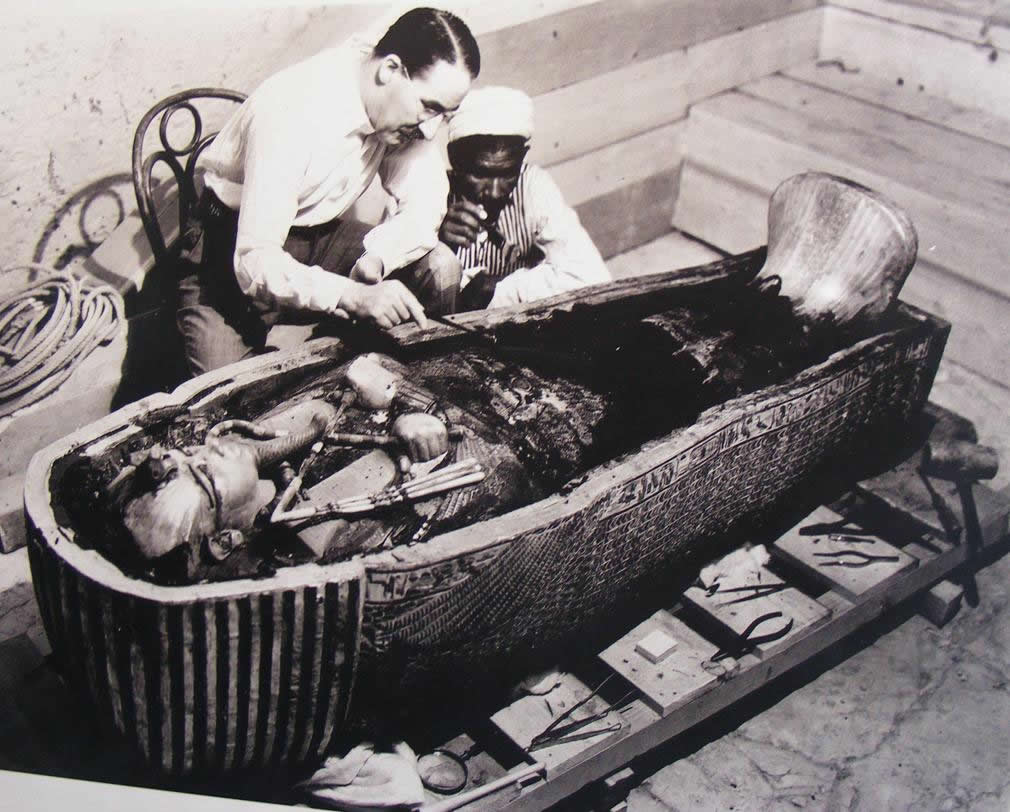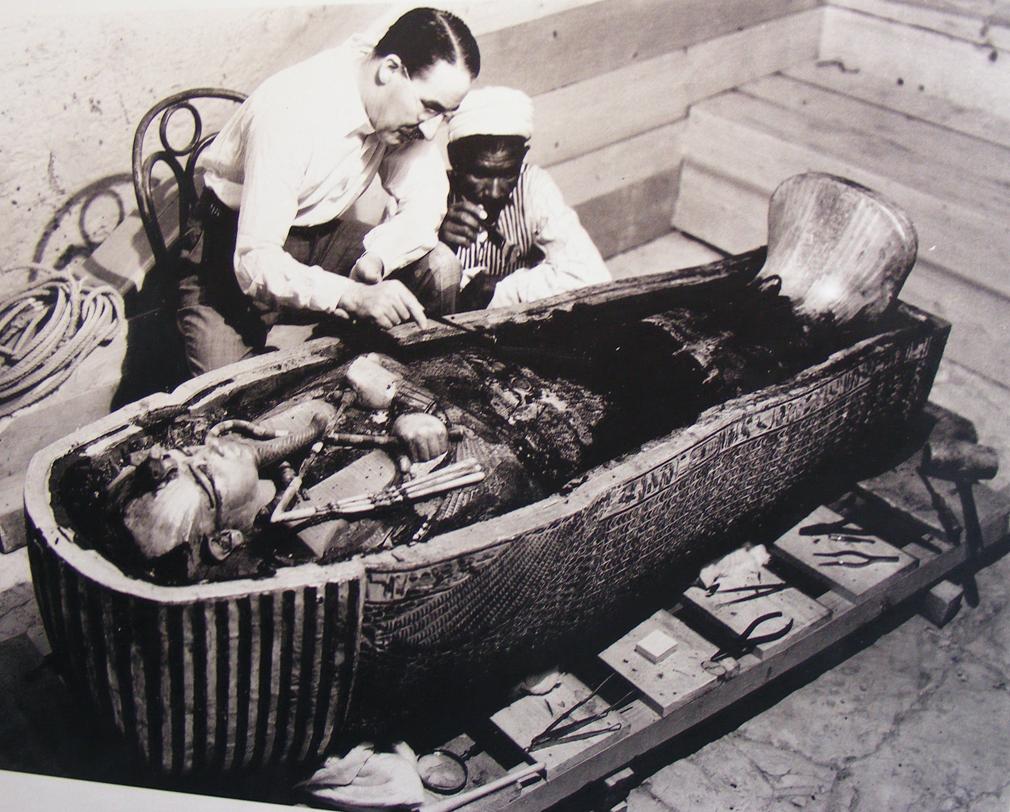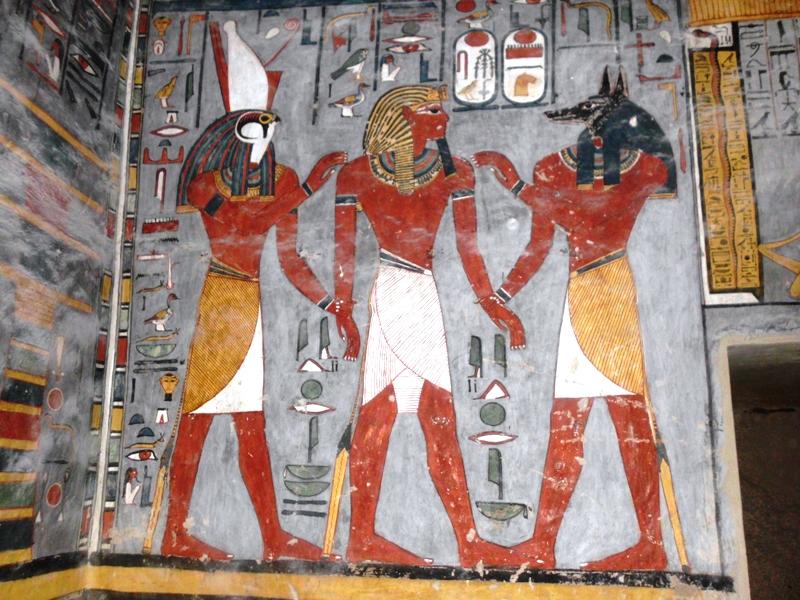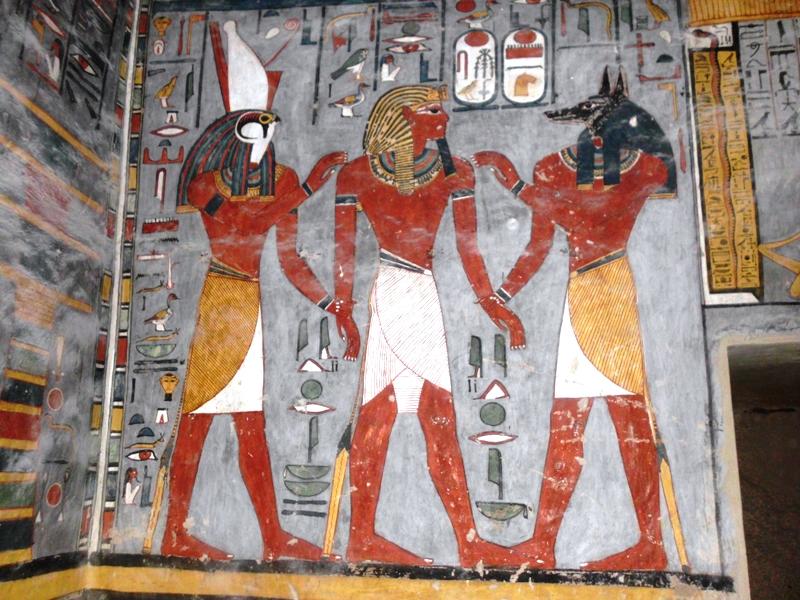|
|

| |
| |
Dahshur
|
| |
Only a few miles south of Saqqara stretches the
important and extensive pyramid field of Dahshur (opened
to the public in 1996). Immediately on the edge of the
fertile land lie the brick buildings of three rulers of
the Twelfth Dynasty: in the north the building of
Sunusret III, in the middle the site Amenemhet II and
further south the Black Pyramid of Amenemhet III.
Further into the desert King Snefru, founder of the
Fourth Dynasty, had two huge stone pyramids built, one
known as the Bent Pyramid in the south and the Red
Pyramid about 2 km (1/4 m) further north.
|
| |
| |
The Bent Pyramid |
|
| |
After Snefru had to abandon his first pyramid
construction in Meidum, he moved the royal necropolis to
Dahshur and began building an even larger pyramid, which
is now known as the “The Bent Pyramid” owing to its
characteristics shape. Considerable settlement of the
stone while the building work was in progress caused the
angle of inclination to be changed halfway up and
reduced to a good 44.
The flatter angle meant that the pyramid only reached a
height of just under 340 feet (105 m) with sides 614 ft
(189m) long. It was the first real pyramid, but when
designing it the architects neglected to test the
load-bearing capacity of the foundations. For the
facing, large sections of which have survived, fine
limestone from the Tura quarries was used.
Another special feature of the Bent Pyramid is that it
has two entrances, one on the north side and one on the
west side. They lead to two separate sets of chambers
with corbelled roofs on different levels. But deep
cracks appeared inside this pyramid as well, and it
could not be used for the king’s interment.
|
 
|
| |
| |
| |
The Offering Chapel |
|
| |
The overall concept for
the cult buildings around The Bent Pyramid used the
classical division into the valley temple, the causeway
and the small mortuary temple, but their individual
designs mark the end of a tradition which was to be
abandoned at the Red Pyramid. As in Meidum, a small
sanctuary was set directly before the east side with a
vestibule and an open court in which the main offering
place was set.
It was flanked with two monumental limestone stelae, ca.
9 m high, now in the Egyptian museum in Cairo. They bore
the titles of Snefru and an image of him robed for the
sed festival.
|
 
|
| |
| |
The Red Pyramid |
|
| |
The impossibility of
using the Bent Pyramid owing to the massive faults in
the building necessitated the construction of another
tomb for Pharaoh Snefru.
This made him the builder of three pyramids altogether
and so the greatest builder in the Old Kingdom. The Red
Pyramid owes its name to a reddish coloring of the
blocks used for the core construction.
Despite the huge length of the sides, that are more than
700 ft (220 m) long and only exceeded by the Great
Pyramid of Cheops, the building only rises to a height
of about 340 ft (104 m), as the angle of inclination was
kept to 43 right from the start, to avoid the problem
encountered with the Bent Pyramid.
The entrance is on the north side, and it leads into a
simple system of rooms with two antechambers and the
ensuing burial chamber. Of the cult complex to the east
only the mortuary temple, which is badly damaged, has
been excavated, and so far no trace of the causeway of
the valley temple has been found. The pyramidion, the
pyramid tip, has been restored and placed in the
mortuary temple.
|
 
|
| |
| |
The Black Pyramid of
Amenemhet III |
|
| |
The rulers of the later
Twelfth Dynasty chose sun-dried mud bricks as building
material for their pyramids, and it is the dark color of
these has given Amenemhet III’s complex its name.
In the matter of security for the royal burial places no
further reliance was places on the huge stone masses of
the Old Kingdom, and these builders preferred to rely on
a veritable labyrinth of corridors and chambers. But
when the protecting casing of limestone had gone
Amenemhet III’s building began to weather and now it
stands in the landscape like a tower crowned with a huge
mass of rubble.
With a height of over 250 ft (78 m) and sides over 340
ft (105 m) long it was once the largest building in the
Middle Kingdom. However, it suffered a similar fate to
the Bent Pyramid of Snefru, for the ground did not prove
strong enough here either. Considerable faults
developed, necessitating the cessation of all work, and
the granite sarcophagus of the king that was already
installed, remained empty.
|
 
|
| |
| |
|
|
|
|
|
|
|